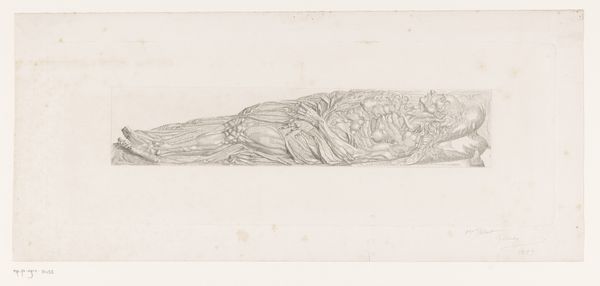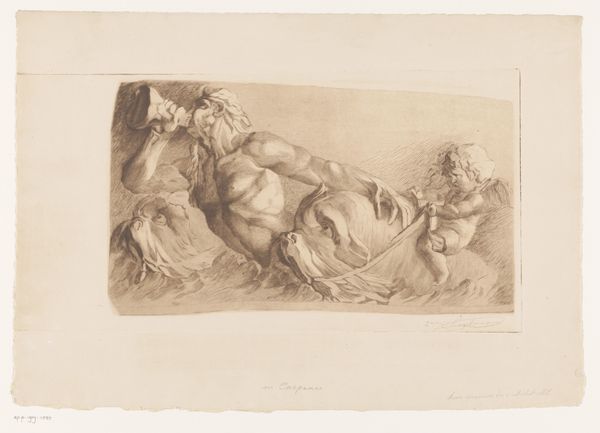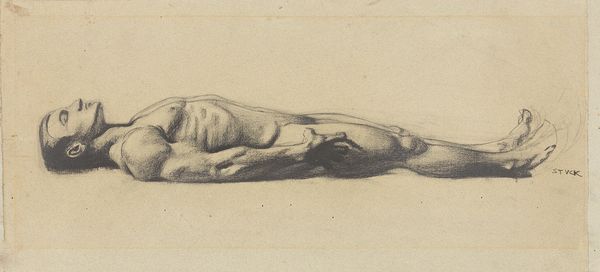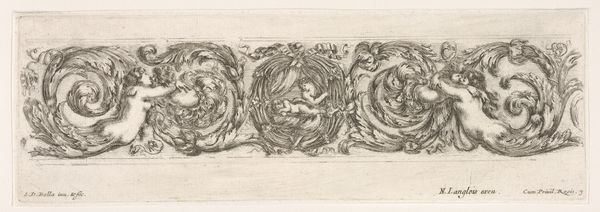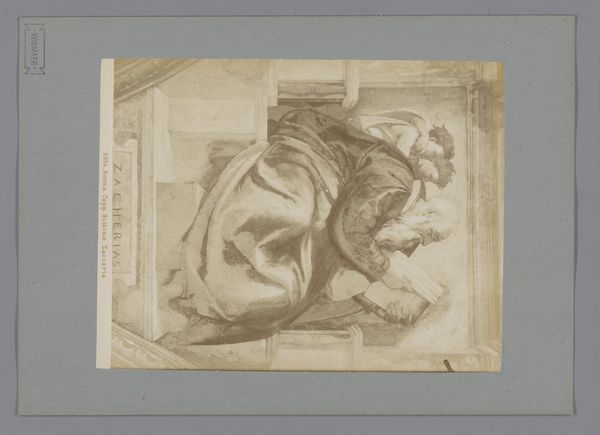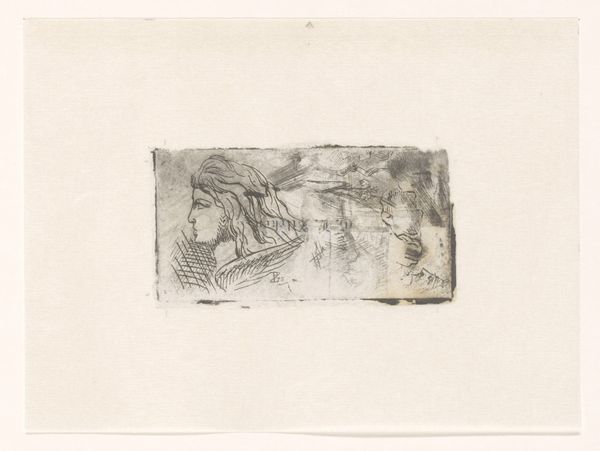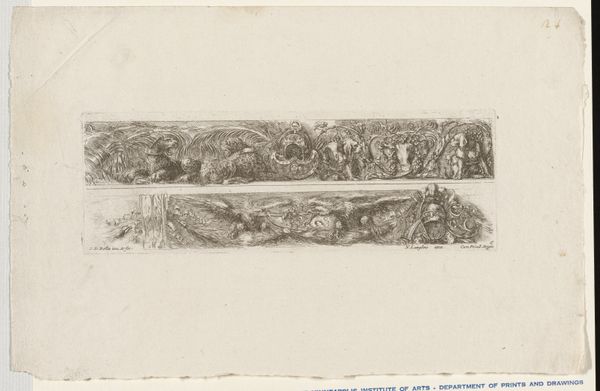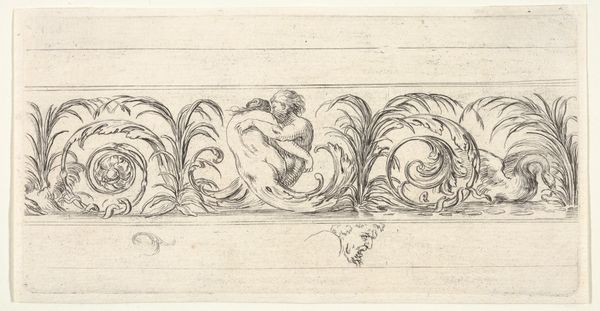
drawing, paper, pencil
#
portrait
#
pencil drawn
#
drawing
#
light pencil work
#
ink paper printed
#
pencil sketch
#
paper
#
pencil
#
pencil work
#
history-painting
#
academic-art
#
nude
#
realism
Dimensions: height 138 mm, width 392 mm
Copyright: Rijks Museum: Open Domain
Curator: This drawing, delicately rendered in pencil on paper, is entitled "Studie naar een grafmonument voor een vrouw," or "Study for a tomb monument for a woman," by Louis Joseph Greuse, created in 1883. It resides here at the Rijksmuseum. Editor: My first impression is one of profound quietude. The composition itself is incredibly linear, forcing your eyes along the horizontal form of the reclining figure. It is all light, like whispers etched into the page. Curator: The reclining nude figure evokes not just death, but perhaps a kind of idealized, eternal rest, referencing classical antiquity and the romanticized vision of death so prevalent during the late 19th century. The draping fabric, both concealing and revealing, speaks volumes about societal views of the female form. Editor: That academic focus on classical form is palpable. It's intriguing how the material itself—pencil, so readily available and affordable—is used to contemplate a monument, traditionally a work of stone demanding considerable labor. There’s an immediate contrast between the accessible and the aspirational. Curator: Precisely. Pencil sketches like these were often preparatory, mapping out the visual language for larger, more permanent works. There's a tentative nature to the lines, almost like he's searching for the most fitting embodiment of grief and remembrance. The monument and body as text. Editor: And consider the labor – all that meticulous cross-hatching with a humble pencil. It highlights how much care and consideration even the preliminary stage demanded, elevating a readily available medium like graphite. Did Greuse do any sculpting or just design work? Curator: To my knowledge, Greuse never realised the design in full as a monument. So we only have access to a possibility and the ideas represented here as they are mediated by his academic art style, one entrenched in symbolic gestures. Editor: The unexecuted nature almost makes it more poignant, more available for contemplation as idea, rather than form. We have the material evidence of intent rather than the monument itself. It causes you to meditate about both its material history and the absence that generated it. Curator: Indeed, the visual language speaks beyond its form as if grief eternalized on a piece of paper is enough to feel both absence and memory. Editor: So instead of being a blueprint it serves as the material instantiation of grief, etched into the very grain of the paper, made accessible through an implement that leaves traces so gentle they could almost be breath.
Comments
No comments
Be the first to comment and join the conversation on the ultimate creative platform.
